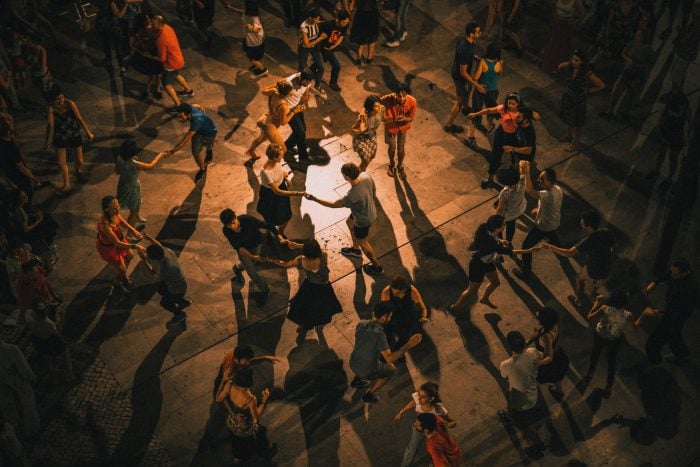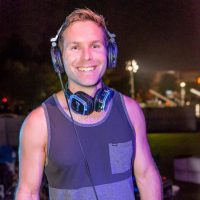**Editor’s note: This article was originally written in March 2020.
“How is he so free, so happy on the dance floor, sober, and surrounded by alcohol?”
That was the question inside my head as I watched my buddy David, nearly 40 years old, twirling around with a smile on a dance floor, packed with intoxicated 20 somethings.
The year was 2011, I’d come back to Ultra Music Festival, this time sober and with a sober friend; he was 18 months ahead of me in sober time but worlds apart in confidence. Two years prior, I attended the same music festival for the first time. I’d leave Miami with alcohol poisoning, going in and out of consciousness as my body involuntarily purged.
I could’ve been one of those “kids” you read about after a big festival, another dead person, all for the pursuit of partying, all because he was too uncomfortable in his own skin to dance without intoxicants.
This month, I’ll celebrate 10 years of sobriety. I get emotional thinking about all the times I nearly lost my life; it makes me appreciate things on such a deeper level now.
But this isn’t the story about how I wrecked my body and lost myself to alcohol, nor is it the story about getting sober.
It’s not a story about how substances are killing a music genre, built around peace, love, unity, and respect, nor is it a story about how dancing saved my life.
Recovering from alcoholism saved my life; dancing is what got me comfortable in my skin. This is the story about how I came to love dancing sober, the lessons I learned from it, and where you can find your own community to experience it for yourself.
Back to my buddy David.
“I go to ecstatic dance,” his response was the first I’d heard of the movement. A year later, I found myself across the country, newly relocated to the new age headquarters of San Diego, “ecstatic dance” punched into my Google search.
No talking, no substances, just a safe place to move to the music.
A few minutes into my first visit, it didn’t take me—a clean-cut dude from Texas—long to realize I’d never out-weird anyone there. People dressed how they wanted, moved how they wanted, smiled a lot, and gave good hugs.
Their liberated movements inspired me to move a little deeper; the wild rhythms of musical genres I’d never listened to pushed me out of my comfort zone; and my own intuition could be heard over the speakers, “Close your eyes and smile.”
I learned right then that the statement “I can’t dance” is a fallacy.
“I can’t dance without worrying about how I look” is the more accurate statement. A few more visits and I realized we are all dancers, there’s no wrong way to move, and dancing without a partner and without substances gave me a chance to grow out of my comfort zone and grow my relationship with myself.
It also gave me a natural high, one that came with a smile and no hangover.
In the lobby, the people were chatty, friendly, and from many walks of life. I made friends who even though they didn’t have an addiction like me and excused alcohol from their lives in search of a higher frequency of existence.
I got the low down on other sober dance communities. There was Dance Church on Sundays and my favorite midweek dance, Tuesday Dance Jam. Out of town, I found myself at 5Rhythms, The Wave Silent Disco, and Daybreaker.
It was at Daybreaker that I felt like someone invented a business based on a dream I hadn’t had yet—a sober morning party, live musicians, blasting house music, eccentric themes, community gatherings, and healthy treats.
Now, talking was allowed on the dance floor, and the message was clear: have fun, sober.
Dancing without alcohol meant that there’s time for exercise and time for connection. The sober dance movement is here, and it’s sexy as f*ck.
Years without a drink, and I finally felt comfortable in my skin and fun, and sobriety were words I could now associate with.
Back at parties with alcohol, I felt freer, more confident, and the crippling fear of what others thought of me lost its control. At my best friend’s wedding, I tore up the dance floor to whispers of “Yeah! And he’s sober!”
The shame and stigma were gone.
So let’s open our search engines, find our communities, and have our own experiences. Ask around for other sober dance experiences until you find your home. Get uncomfortable until you’re comfortable.
And for those who aren’t in a big city, remember all of these groups were started by normal people who—like you—just wanted to dance. All you need is some people, some music, some guidelines, and an open mind.
The beautiful thing is that whether people are sober for an hour, a day, an addict, or sober curious, the labels get dropped; we all become human again, dancing to the beats in a community to connect and relieve stress like we’d done eons before.
When I was at Defected Croatia last year, dancing like a maniac, a young British raver nudged me and asked the question I get so frequently asked when I’m out in the club scene, “What are you on?”
I smiled and told the truth, “Espresso.”
He looked perplexed. His face said he wanted what the Americans had, some slang for an elusive drug he’d never heard of.
“What’s that?” he inquired further.
“Umm, like coffee bro. I’m sober.” I smiled and gave him a friendly pat on the back.
He laughed and yelled to his group of friends, “This guy’s f*ckin’ sober!”
They laughed in adulation. I can’t go back and save my younger self from the pain, but I can be a better example now.
Thank you dance. Thank you sobriety. Thank you community. Thank you self.












Read 8 comments and reply